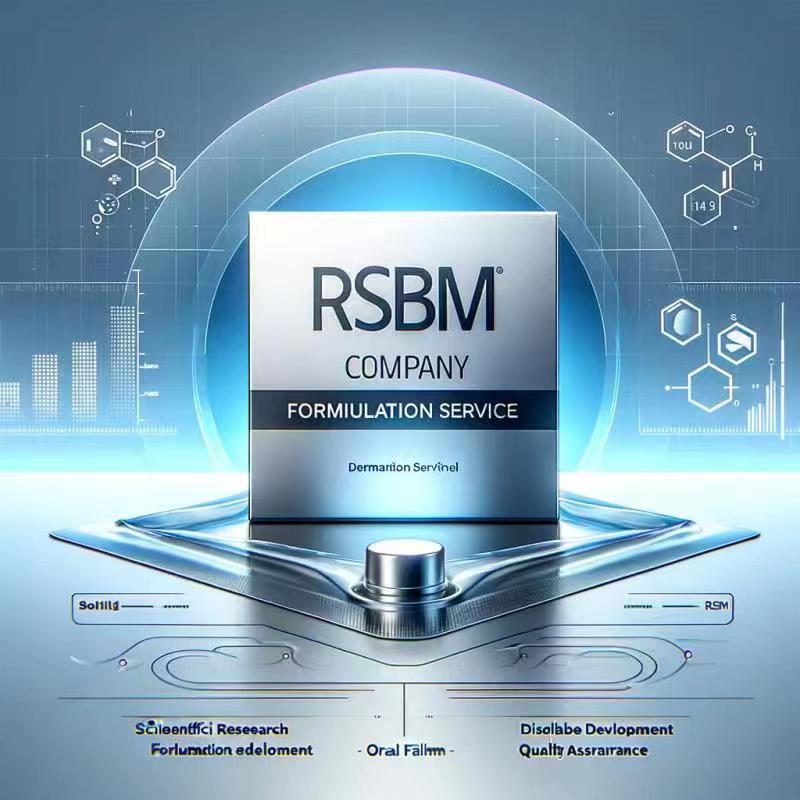Orally disintegrating films (OTF) represent a novel drug delivery method and offer many irreplaceable advantages compared to traditional forms like tablets, capsules, and syrups. They are particularly suitable for patients with swallowing difficulties, including children, the elderly, and those with throat discomfort. OTFs, when administered, disintegrate in the mouth, allowing the drug to be absorbed through the oral mucosa or the gastrointestinal tract, leading to rapid onset of action, reduced or avoided first-pass metabolism, and increased bioavailability.
OTFs include various types like oral dissolving films, oral dispersing films, and quick dissolving oral thin films. They can be further classified into oral mucosal films, which adhere to the oral cavity, and oral disintegrating films, which dissolve upon contact with saliva.
Since the 1970s, OTFs have been extensively studied as a new drug delivery system. Currently, more than ten OTF drugs are available globally for a wide range of diseases, including migraines, schizophrenia, opioid dependency, pain, nausea, and vomiting. Chinese pharmaceutical companies are also actively developing OTFs, including those under review and approved.
OTFs' advantages include reducing or avoiding first-pass effects, improving patient compliance, flexible dosing, and extending product lifecycles. These characteristics have driven the growing demand for OTFs in the market, especially as the aging population increases the need for safe and accessible drug delivery methods.
Orally disintegrating films are commonly referred to as both OTF (Oral Thin Films) and ODF (Oral Disintegrating Films). Both terms are used interchangeably in the pharmaceutical industry and research literature to describe the same type of drug delivery system. These films are designed to disintegrate rapidly when placed in the mouth, allowing for the quick release and absorption of the medication.
"Design and Development of Orally Disintegrating Films: A Platform Based on Hydroxypropyl Methylcellulose and Guar Gum"
Authors: Ana Flávia Freitas de Carvalho, Vanessa Ferreira Caldeira, Ana Paula Oliveira, Joyce Kelly Marinheiro da Cunha Gonsalves, Edigênia Cavalcante da Cruz Araújo
Published on: January 1, 2023
Source: ScienceDirect.
"Formulation and Evaluation of Bisoprolol Fast Dissolving Tablets"
Author: Mahmoud Mahyoob Alburyhi
Published on: September 15, 2023
Source: ResearchGate.
"Formulation and Evaluation of Orally Disintegrating Films of Levocetirizine Dihydrochloride"
Objective: To formulate taste-masked orally-disintegrating films of the bitter levocetirizine dihydrochloride, enhancing convenience and compliance for the elderly, pediatric, bedridden, and non-cooperative patients.
Source: IJPSONLINE.
"Orally disintegrating films focusing on formulation, manufacturing ..." by Minsoo Kim, Du Hyung Choi & Seong Hoon Jeong. This paper has received attention for discussing ODFs as a popular form of drug administration, emphasizing patient convenience and compliance.
"Oral disintegration films: applications and production methods". This paper highlights the advantages of ODFs such as ease of swallowing, precise dosage, low thickness, and flexibility, making them ideal for patients who have difficulty swallowing or do not wish to consume water with their medication.
"Orally disintegrating films: A modern expansion in drug delivery system". This paper focuses on the characteristics of ODFs, including their composition, fast disintegration, and the incorporation of active pharmaceutical ingredients using hydrophilic polymers.
"Comparative study on disintegration methods for oral film preparations" by Isabell Speer, Denise Steiner, Yasmin Thabet, Jörg Breitkreutz, Arno Kwade. This research provides insight into various disintegration methods for ODFs and emphasizes their high application comfort due to rapid disintegration in the oral cavity.
"Design and development of orally disintegrating films". This paper discusses the development of a new ODF based on hydroxypropyl methylcellulose and guar gum, using a design of experiments approach to optimize filmogenicity conditions and disintegration time.

